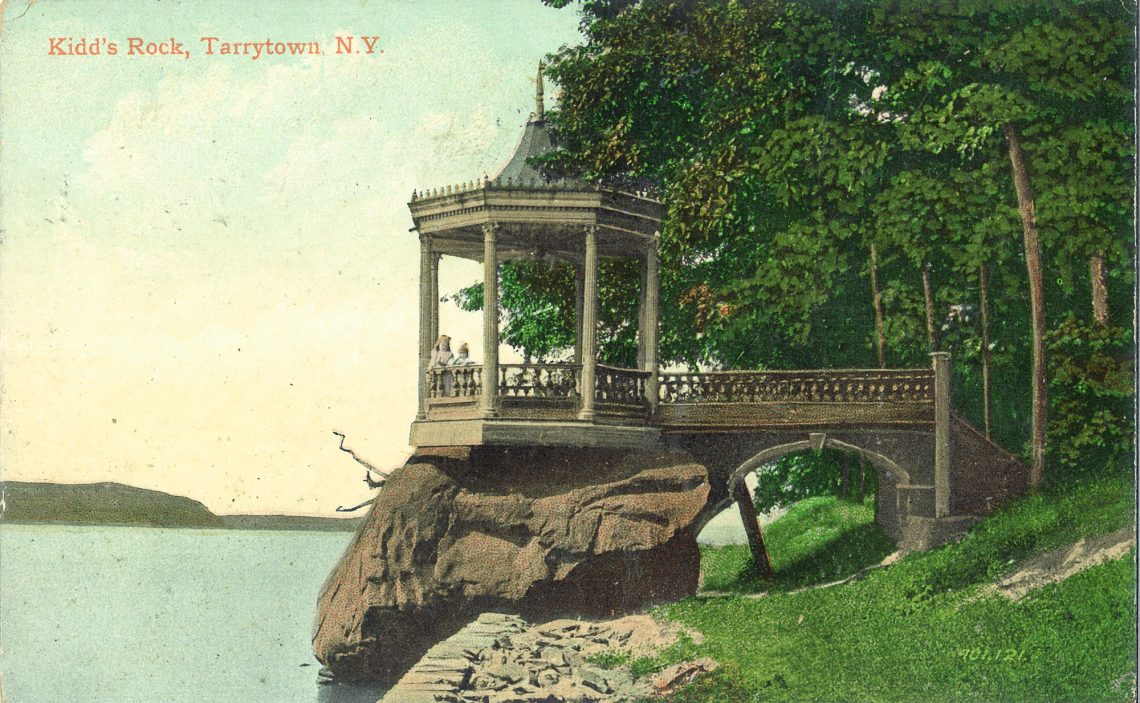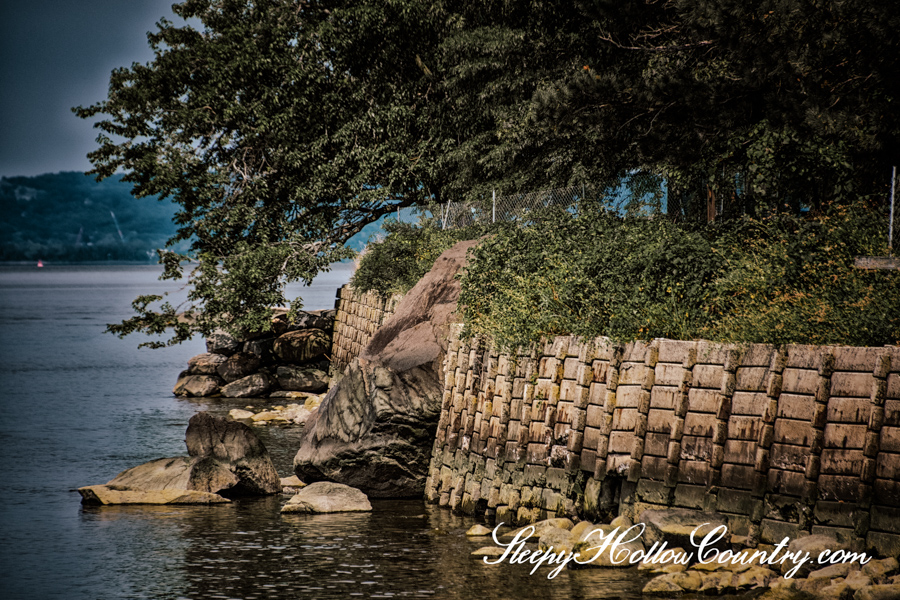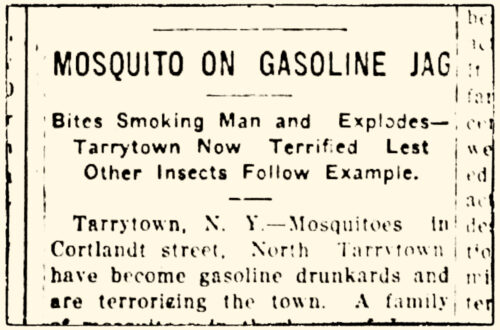
Captain Kidd’s Rock
“This has long been the name of a rock that is part of the river-wall on the outer side of Kingsland’s point. There is a summer-house built over the rock and if there were ever golden riches beneath it, or if there are treasures hidden there still, it is not (fortunately) the duty of a sober historian to tell.”
–Chronicles of Tarrytown and Sleepy Hollow, by Edgar Mayhew Bacon
Kingsland Point, today a waterfront park in Sleepy Hollow, was once part of an estate owned by Ambrose Kingsland, a wealthy whale oil merchant who served one term as mayor of New York City. Kingsland also owned land nearby in Tarrytown that would be folded into the Lyndhurst estate. This postcard dates to the early 1900s, after Kingsland’s death but before Westchester County acquired the property in the 1920s for parkland. Since then, the gazebo has been removed and the seawall raised.
Legend has it this massive boulder was a meeting place for Frederick Philipse, lord of a 52,000-acre manor on the shores of the Hudson River, and the notorious pirate Captain Kidd. Piracy would have been a huge issue for Philipse, whose trade depended on sea routes between the Caribbean, New York, and Europe. This alleged rendezvous is in fairly close proximity to Philipsburg Manor, Philipse’s northern most trading center and the location of his grist mill.
Were Captain Kidd and Philipse engaged in some sort of nefarious arrangement? We may never know. Among other places along the eastern seaboard, Kidd reputedly hid gold and other valuables near throughout the Hudson River Valley including at Money Hill at Croton Point, on the summit of Crow Nest mountain, near Kidd’s Cove in the town of Esopus, and even as far inland as the Catskill Mountains. Some legends even repeat that Captain Kidd scuttled his treasure ship off Jones Point at the foot Dunderberg Mountain. No treasure has ever been found. Or no one is admitting to it.





One Comment
Paul Marshall
Hi Jim:
Is there a story on the coffee dam set up to hunt for the treasure ship you could share? A map with its location? Fascinating history!